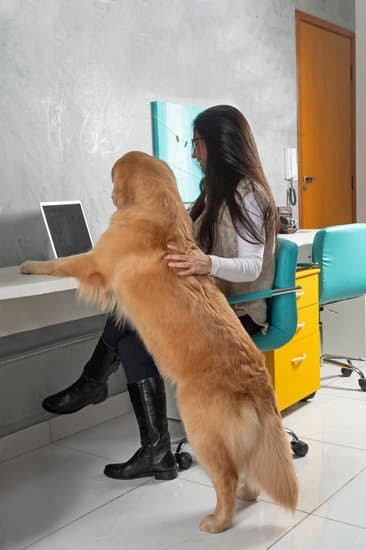Training your dog is vital for their overall well-being and successful integration into society. It helps establish clear communication between you and your furry friend, ensuring a harmonious and obedient relationship.
One effective tool that can assist you in this endeavor is a training collar. In this article, we will explore the importance of training your dog, delve into the different types of training collars available, and provide guidance on how to choose the right one for your canine companion.
Properly trained dogs are happier and healthier because they understand their boundaries and know how to behave in various situations. Training not only enhances their physical safety but also gives them mental stimulation, preventing boredom and destructive behaviors. Additionally, a well-trained dog is confident and comfortable in social settings, making outings a more enjoyable experience for both you and your four-legged friend.
A training collar serves as an invaluable aid in teaching your dog proper behavior. It provides clear feedback to enforce commands effectively while still using positive reinforcement techniques.
By incorporating a training collar into your dog’s training routine, you can expedite the learning process and strengthen the bond between you two. In the following sections of this article, we will explore different types of training collars available on the market, discuss how to choose the right one for your dog’s needs, and provide step-by-step instructions on introducing and utilizing a training collar in your dog’s obedience journey.
Understanding the Different Types of Training Collars in the Market
Training collars are a popular tool for teaching dogs obedience and behavior control. However, with the wide variety of training collars available in the market, it can be overwhelming to choose the right one for your furry companion. In this section, we will explore the different types of training collars and their features, pros, and cons.
- Choke Collars: Choke collars, also known as slip collars or chain collars, are made of a metal chain that tightens around the dog’s neck when pulled. They work by applying pressure to the dog’s neck to discourage pulling or disobedience. While they can be effective when used correctly by experienced trainers, they can also cause harm if misused or applied too forcefully.
- Prong Collars: Prong collars consist of metal links with inward-facing prongs that press against the dog’s neck when pulled. These collars are designed to imitate a mother dog’s corrective bite and provide more control over large or powerful dogs. It is crucial to use prong collars under professional supervision as they can cause physical harm if used improperly.
- Remote Training Collars: Remote training collars, also known as electronic or shock collars, utilize electronic stimulation to reinforce commands and deter unwanted behaviors. They come with a handheld remote through which you can deliver vibrations or mild electric pulses to your dog’s collar. Remote training collars have adjustable intensity levels and can be an effective tool when used responsibly and under expert guidance.
Beyond these three main types of training collars, there is an array of variations available in terms of design and functionality. For example, some remote training collars may include features such as tone modes for verbal cues or GPS tracking capabilities for better control during off-leash training sessions.
When selecting a training collar for your dog, it is important to consider their individual needs, size, and temperament. It is recommended to consult with a professional dog trainer or veterinarian to determine which type of collar would be the most appropriate and effective for your specific training goals.
Now that we have explored the different types of training collars, let’s move on to the next section and learn about choosing the right training collar for your dog.
Getting Started
Choosing the right training collar for your dog is a crucial step in ensuring successful training sessions. Each dog has unique needs and temperament, so it is essential to select a collar that suits them best. Here are some factors to consider when choosing a training collar:
- Size: Collars come in different sizes, so it is important to measure your dog’s neck circumference accurately. Use a flexible tape measure and wrap it around the base of their neck where the collar will sit comfortably. Add an extra inch or two to ensure it won’t be too tight. This measurement will help you find the right size collar for your dog.
- Materials: Consider the materials used in the collar construction, as some dogs may have sensitivities or allergies to certain materials. Common options include leather, nylon, and metal chains. Leather collars are durable and comfortable but may require more maintenance. Nylon collars are lightweight and easy to clean, making them suitable for active dogs. Metal chain collars provide more control but should be used with caution.
- Adjustability: Look for a training collar that offers adjustable sizing options to accommodate your dog’s growth and ensure a secure fit. A properly fitting collar should be snug enough so that your dog cannot slip out of it but loose enough that you can easily fit two fingers between their neck and the collar.
It is important to consult with a professional dog trainer or veterinarian when selecting a training collar for your dog. They can provide valuable guidance based on your dog’s specific needs and temperament, helping you make an informed decision.
Once you have chosen the right training collar for your dog, it is time to introduce it gradually and positively associate it with pleasant experiences. This will help your furry friend build a positive association with the collar, making their training experience more enjoyable.
Remember, selecting the right training collar is just one aspect of effective dog training. It is equally important to implement proper techniques and commands with the collar to ensure your dog learns and responds appropriately. The next section will provide instructions on how to introduce and acclimate your dog to wearing the training collar.
Introducing the Training Collar to Your Dog
Introducing a training collar to your dog is an important step in their journey towards effective training. Properly introducing the collar and associating it with positive experiences can help your dog understand that wearing the collar is not something to be feared or avoided. Here are some techniques to make the introduction process smooth and stress-free for both you and your furry friend:
- Gradual Introduction: Start by simply allowing your dog to sniff and investigate the training collar before putting it on them. This helps them become familiar with its presence and scent. Gradually introduce the collar by letting them see it, touch it, and eventually allowing them to wear it for short periods of time.
- Positive Association: Make sure your dog has positive experiences while wearing the training collar. Use plenty of praise, treats, and gentle petting during this process. Associate the collar with activities that they enjoy, such as going for a walk or playing fetch, so they begin to associate its presence with fun and rewards.
- Short Sessions: Keep the initial sessions short so that your dog does not become overwhelmed or stressed. Start with just a few minutes of wearing the collar indoors, gradually increasing the duration over time as your dog becomes more comfortable.
It’s important to address any concerns or misconceptions that may arise during this stage of introducing the training collar to your dog:
- Concern: Will my dog find the collar uncomfortable?
- Solution: Ensure that you have selected a properly-fitting collar made from comfortable materials like nylon or leather. Regularly check for any signs of irritation or discomfort on your dog’s neck.
- Concern: Will my dog develop negative associations with the collar?
- Solution: By using positive reinforcement techniques during each interaction with the training collar, you can help prevent any negative associations from developing. Consistency in associating the collar with enjoyable activities will go a long way in ensuring a positive experience for your furry friend.
Remember, patience is key during this process. It may take time for your dog to fully adjust to wearing the training collar. Stay positive, offer rewards and encouragement, and gradually increase their exposure to the collar. This will help create a strong foundation for successful future training sessions using the collar as a tool.
Proper Fit and Placement of the Training Collar
When it comes to training your dog with a training collar, one of the most crucial aspects is ensuring that the collar fits properly and is placed correctly on your dog’s neck. A well-fitted and well-positioned collar not only ensures the effectiveness of the training but also prevents any discomfort or injury to your furry friend.
In this section, we will provide step-by-step instructions on how to achieve the optimal fit and placement for your dog’s training collar.
To begin, you’ll need to measure your dog’s neck circumference accurately. Use a soft measuring tape or a piece of string to measure around the base of your dog’s neck, where the collar would sit. Make sure to leave enough room for two fingers to fit comfortably between the collar and your dog’s neck. This measurement will give you an idea of the size of training collar you should be looking for.
Once you have selected the appropriate size, fit the collar snugly around your dog’s neck without being too tight or too loose. It should be secure enough that it cannot slip over their head, but not so tight that it restricts their breathing or causes discomfort. Check for any signs of irritation or rubbing on your dog’s skin, as this may indicate an improper fit.
In terms of placement, it is important to position the training collar high up on your dog’s neck, just behind their ears. Placing it lower down on their neck can lead to ineffective correction or potential harm. Additionally, ensure that the collar is centered in front and sits flat against their fur without any twisted or bunched-up sections.
It is essential to note that each type of training collar may have specific instructions for fitting and placement, so be sure to consult the manufacturer’s guidelines as well.
If you are unsure about fitting or placing the training collar correctly, consider consulting a professional dog trainer or veterinarian who can provide guidance tailored to your dog’s needs and training goals. Remember, the comfort and safety of your dog should always be a top priority when using a training collar.
By taking the time to achieve a proper fit and placement of the training collar, you are setting the foundation for successful training sessions with your dog. A well-fitted collar ensures that the corrections delivered are effective yet humane, allowing you to train your dog in a way that is both positive and safe.
Basic Commands and Training Techniques Using a Training Collar
Dog training collars can be highly effective tools for teaching basic commands and training techniques to your dog. When used correctly, these collars can help reinforce positive behaviors, improve communication between you and your dog, and establish a foundation for effective training.
One of the fundamental commands that can be reinforced with a training collar is “sit.” To use the collar for this command, follow these steps:
- Attach the training collar securely around your dog’s neck, ensuring it is snug but not too tight.
- Give the command “sit” while gently pulling upwards on the collar to guide your dog into a sitting position.
- As soon as your dog sits, release pressure on the collar and offer praise or a treat as positive reinforcement.
Repeat this process consistently until your dog learns to associate the command “sit” with the desired action.
Another important command that can be trained using a training collar is “stay.” Here’s how to reinforce this behavior:
- Put your dog in a sitting or standing position.
- Give the command “stay” while holding onto the leash attached to the training collar.
- Step back slowly while maintaining tension on the leash.
- If your dog begins to move towards you before you give them permission, gently correct their behavior using a quick tug on the leash combined with a verbal cue like “uh-uh.”
- Once your dog successfully remains in place for a few seconds, return to them calmly and reward them with praise or a treat.
By consistently practicing these exercises, you can effectively train your dog to understand and respond to basic commands using a training collar.
It’s important to note that while training collars can be useful tools, they should always be used responsibly and ethically. Positive reinforcement techniques should always accompany their use, ensuring that good behavior is rewarded while avoiding any negative associations with the collar.
| Command | Technique |
|---|---|
| Sit | – Attach the training collar around your dog’s neck securely
|
| Stay | – Put your dog in a sitting or standing position
|
Advanced Training Tips and Techniques with a Training Collar
Exploring Off-Leash Training
One of the advanced training techniques that can be facilitated with a training collar is off-leash training. This type of training allows your dog to have more freedom while still maintaining control and obedience. Before attempting off-leash training, it is crucial to ensure that your dog has mastered basic commands such as “come” and “stay” while on a leash.
To begin off-leash training, choose a safe and secure area without distractions. Keep in mind that off-leash training should only be done in areas where it is allowed and legal. Attach the training collar to your dog’s neck and attach a long leash for added security.
Start by practicing the commands your dog already knows but gradually increase the distance between you and your pet. Use the remote control feature of the training collar to reinforce commands from a distance when necessary. Reward your dog with treats or praise for obeying commands promptly.
As your dog becomes more comfortable and reliable with obeying commands off-leash, gradually phase out the use of the leash while still keeping the collar on for added safety. Remember to have patience during this process, as it may take time for your dog to fully grasp off-leash obedience.
Behavioral Corrections
Another use for a training collar is making behavioral corrections in dogs. Training collars can help address unwanted behaviors such as excessive barking, jumping up on people, or pulling on the leash during walks.
When dealing with these behaviors, it is essential to respond consistently and immediately to correct them. Use the appropriate command associated with the behavior you want to correct (e.g., “quiet” for barking) and deliver a gentle stimulation using the training collar when needed.
It’s important to note that corrections should be given at an appropriate level that gets your dog’s attention without causing harm. Always start at low levels and gradually increase if necessary. It is crucial to remember that positive reinforcement should be the primary focus of training, and corrections should be used sparingly and as a last resort.
Consistency is key when using a training collar for behavioral corrections. Reinforce desired behaviors with praise and rewards, and be patient as your dog learns what is expected of them. Seeking guidance from a professional dog trainer can also be beneficial when addressing specific behavioral issues.
Positive Reinforcement Techniques
While a training collar can be an effective tool for training, it is important to incorporate other positive reinforcement techniques into your training routine. Positive reinforcement involves rewarding your dog for displaying desired behaviors rather than solely relying on corrective measures.
When your dog obeys a command correctly, offer verbal praise, treats, or playtime as a reward. Use these positive experiences to build a stronger bond with your furry friend and motivate them to continue learning and following commands.
Positive reinforcement can enhance the effectiveness of the training collar by associating good behavior with positive outcomes. By combining both techniques, you create a well-rounded and humane approach to dog training that encourages cooperation and trust between you and your pet.
Remember that every dog is unique, so it’s important to tailor your training approach to suit their individual needs. Implementing advanced training tips and techniques with a training collar requires patience, consistency, and ongoing practice. With dedication and proper guidance, you can achieve success in building an obedient and well-behaved furry companion.
Addressing Safety Concerns and Ethical Use of Training Collars
Understanding the Importance of Safety in Training Collar Use
When using a training collar to train your dog, it is essential to prioritize their safety and well-being. While these collars can be effective training tools, improper or unethical use can lead to unintended consequences and harm. Therefore, it is crucial for dog owners to educate themselves on the proper use and potential risks associated with training collars.
Safety Concerns Associated with Training Collars
One common concern surrounding training collars is the potential for physical discomfort or injury to the dog. To address this concern, it is important to choose a collar that fits properly and does not cause unnecessary pressure or pain. Additionally, using excessive force or inappropriate methods can lead to psychological distress in dogs, which may hinder their progress in training.
Another safety concern relates to the duration of collar usage. Leaving a training collar on for extended periods can result in skin irritation, pressure sores, or hair loss around the neck area. It is recommended to only use the collar during training sessions and remove it when not in use.
There is also a risk of unintended negative associations if the training collar is used incorrectly. Dogs may associate discomfort from the collar with their environment or people, leading to fear or aggression. Preventing such associations requires careful conditioning and positive reinforcement techniques.
Ethical Use of Training Collars
Using a training collar ethically means prioritizing your dog’s well-being throughout the entire training process. This includes selecting an appropriate collar for your dog’s temperament and needs, ensuring proper fit and placement, as well as utilizing humane training techniques alongside the collar.
It is important to remember that a training collar should never be used as a substitute for positive reinforcement-based methods. Incorporating rewards like treats or praise alongside the use of a training collar helps create a positive association with both the command and wearing the collar.
Consulting with a professional dog trainer or veterinarian can provide valuable guidance and support in ensuring the ethical use of training collars. They can assess your dog’s specific needs, help you select the right collar, and provide personalized training techniques that promote both safety and effectiveness.
By being proactive in addressing safety concerns and using training collars ethically, you can create a safe and positive training environment for your dog. Remember to always prioritize your dog’s well-being, adapt your approach to their individual temperament, and seek professional assistance if needed. With proper care and responsible use, a training collar can be an effective tool in training your beloved furry friend.
Conclusion
In conclusion, training your dog with a training collar can lead to great success in their overall behavior and obedience. Throughout this article, we have discussed the importance of training your dog for their well-being and integration into society. We have also explored the different types of training collars available in the market and highlighted the factors to consider when selecting the right collar for your dog’s specific needs.
When introducing the training collar to your dog, it is crucial to do so gradually and create positive associations. It is also essential to ensure that the collar fits properly and is placed correctly on your dog’s neck to prevent any discomfort or injury. By following these steps and implementing basic commands and techniques using the training collar, you can reinforce positive behaviors effectively.
For those looking to take their dog’s training to a more advanced level, a training collar can facilitate off-leash training and behavioral corrections. However, it is crucial to remember that consistency, patience, and positive reinforcement are key throughout the entire training process.
While training collars can be valuable tools in dog training, it is important to address safety concerns and use them responsibly and ethically. Avoid prolonged or excessive use of the collar, prioritize your dog’s well-being and comfort, and always seek professional guidance if needed.
Training your dog with a training collar takes time, effort, and dedication. By implementing the techniques discussed in this article and seeking professional guidance when necessary, you can achieve great success in shaping your dog into a well-behaved companion. So go ahead and start using a training collar as a tool for effective dog training – you’ll be amazed at the results.
Frequently Asked Questions
How do you train a dog to come with a training collar?
Training a dog to come with a training collar involves consistent practice and positive reinforcement. Start by introducing the collar to your dog and allowing them to become familiar with it before attaching a leash. Begin in a quiet, distraction-free environment and call your dog’s name followed by the “come” command while gently tugging on the leash.
When they come towards you, reward them with lots of praise, treats, or playtime. Gradually increase the distance between you and your dog and keep practicing in different environments until they respond reliably to the command.
How should I train my dog with a shock collar?
When using a shock collar for dog training, it is important to approach it carefully, as it can be controversial and potentially harmful if misused. First, consult with a professional dog trainer who has experience with shock collars. Understand that this method should only be used as a last resort for specific behavior issues that have not responded to other training techniques.
Familiarize your dog with the collar without activating the shocks initially, allowing them to associate it positively through treats or playtime. Once they are comfortable wearing it, introduce low-level shocks while associating them with undesirable behaviors or commands they need to obey. Always start at the lowest intensity level and work upwards if needed, never using high levels of shock as punishment or revenge.
Is a dog training collar a good idea?
Whether a dog training collar is a good idea depends on several factors such as training goals, individual temperament of the dog, and proper usage by the owner. Training collars can provide effective results when used correctly under professional guidance. They offer additional control over dogs during off-leash training sessions or addressing specific behavioral issues like excessive barking or chasing prey.
However, misuse or improper implementation of any aversive tool can be counterproductive and cause harm to the animal physically or psychologically. It is essential that owners prioritize positive reinforcement-based methods along with proper socialization and regular obedience training before considering the use of an advanced training collar for their dog.

Welcome to the blog! I am a professional dog trainer and have been working with dogs for many years. In this blog, I will be discussing various topics related to dog training, including tips, tricks, and advice. I hope you find this information helpful and informative. Thanks for reading!





